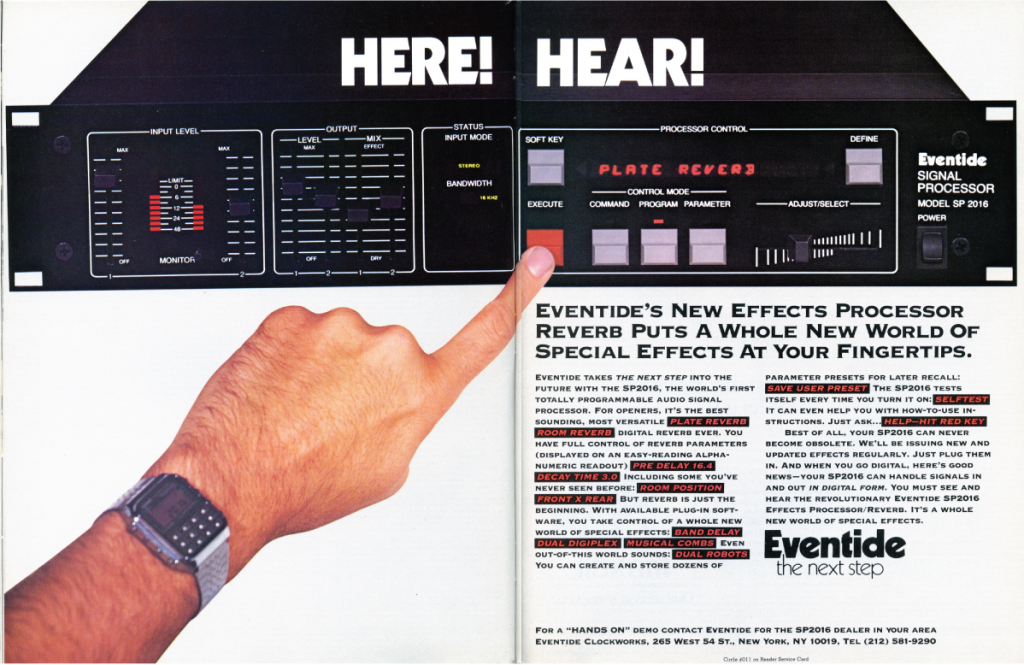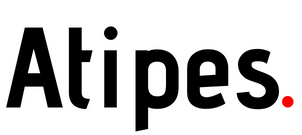Eventide inc
In the Beginning…
So we had a name. An improbable name by the standards of the day, it being 1970. Now we needed a business. The stuff we had been making wasn’t particularly inspiring. Our original “product” was a tape search unit for the Ampex MM1000 multitrack recorder. Eventide had its start in a small New York studio where there was no room for a “tape op.” Co-founder Steve Katz requested co-founder Richard Factor to build a gadget that Katz could use to return the tape to a specific location. Co-founder Orville Greene, owner of the studio, financed the initial unit. The unit was an immediate success, allowing Katz to engineer records solo. In a spasm of zeal he presented the unit to the Ampex representative, who notified the factory, which said “we need some of them!” Hence we survived for a while OEMing tape search units and a handful of other low (very low) volume products such as a two-second delay line for telephone research and an electrostatic deflector for dispensing nanoliter quantities of chemical reagents.
In this first year we also presented at the Audio Engineering Society meeting in NYC a fanciful aggregation of “products” that we were unable to demonstrate due to the complete lack of any internal electronic components, but that we felt nonetheless might attract some customers were they realized in commercial form. From this show, and from a fortuitous order by Maryland Public Broadcasting, came our initial product line, the Instant Phaser® and, for Maryland, a digital delay line giving two channels of independent delay from a single input.
The delay went from 0 to 200 milliseconds, which required a hundred shift registers and lots of patience to get them working. This became the classic model 1745 Digital Delay Line, which rapidly transmogrified to the 1745A (using shift registers that required far less patience and having nice LED readouts) and finally to the 1745M, in which appeared, for the first time (we believe) Random Access Memory in an audio product. This modular product also sported an optional pitch change module, another novelty in that it was the first such product available with a frequency response suitable for music.
Meanwhile, Toiling in the Basement…
Tony Agnello, who joined our “engineering staff” in the early ’70s, was working in the basement (literally – in fact we all did) on what would become the famous H910 Harmonizer®. This was the first of our products to achieve almost instant, lucrative, and widespread popularity. With thousands sold, and old units still fetching decent prices on the used market, this product put us on the audio industry map. Shortly thereafter, the H949 model Harmonizer brand effects processor was added to the line. This introduced a finely controllable, very small pitch change capability, used for “doubling” vocals along with other effects. That and the “lupine board” or “deglitch” option finally allowed recordings to be produced with electronically-controlled pitch largely free of objectionable artifacts. Along with the products designed for recording studio use were a couple dedicated to broadcasters. The Monstermat was based on the notion that the performance of the “Cart(ridge)” machines universally used for playing commercials and music could be enhanced by recording sum-and-difference data instead of left and right channels. The Mono Stereo Matrix unit permitted this, and added optional DBX noise reduction as well. Far more fun was our first obscenity delay with a big yellow DUMP button. This allowed one to magically delete obscenities uttered by telephone callers without interrupting the program! The first BD955 used 160 16K RAM chips, all with a substantial markup. We loved RAM chips.
Speaking of RAM Chips
We loved them so much that we went into the memory business! It happened by accident. We had purchased a Hewlett-Packard desktop computer to help with research in reverberation algorithms. These algorithms are memory-hungry; the computer was memory-shy. The HP had a total of 128K of RAM, and two slots that could hold an additional 128K each. HP’s price: $3,000 per board! It didn’t take long to figure out that, given the simple design and our use of RAM elsewhere, we could create and manufacture the two boards needed to expand our computer for less than the price of a single board purchase from HP. HP provided such a nice price “umbrella” for this exploit that we made a thriving business of HP-compatible hardware from the late ’70s to the mid ’90s! When we finally abandoned the business due to the PC revolution and the obsolescence of the HP equipment we supported, our line included specialized HPIB buffers/multiplexers, Ethernet cards, and, of course, memory for many HP computer models.


Back to Our Mission
Recall the reason we got into the memory business: reverb research. Realistic digital reverb without large mechanical apparatus or enormous spaces was and to some extent remains an unachieved goal. While our product line emphasized time- and pitch-related effects, the benefit of true digital signal processing, both for reverb and other effects, had not truly been bestowed on the audio industry. The Eventide SP2016, with its “Stereo Room” and other unique programs rendered possible by DSP, was unleashed on the industry in the first year of the ’80s and quickly achieved a legendary status. New versions of the Harmonizer effects processors (including a brief flirtation with an inexpensive version intended for music store sales) along with improved versions of our other audio products combined with the burgeoning memory business made us realize that We Needed More Space. (Adding to the urgency was the fact that we were in two facilities across a busy Manhattan street from each other. Daily our employees risked their lives transporting equipment from manufacturing to final QC.) It was time to move. After due deliberation we selected nearby New Jersey as our new home. 13 years, uncounted tonnes of junk, and unrecountable van-driving experiences later we found ourselves in our pleasant industrial park in suburban NJ. The extraordinary luxury of not being crowded would last for almost five years!
Address; Eventide Inc.
1 Alsan Way
Little Ferry NJ 07643
United States of America
Phone: +1-201-641-1200
Fax: +1-201-641-1640
Copyright © 2023 Eventide Inc. All Rights Reserved. All trademarks are the property of their respective owners
©Copyright 2023.All Rights Reserved.
Disclaimer : This advertisement and the information related to it are provided and maintained by the advertiser. Atipes.com is not responsible and can not guarantee the accuracy or completeness of this advertisement. Please note that every advertisement for rent or for sale should at a minimum, display the energy performance rating of the property. See our Flats and Housing Posting Rules for more information.
Avoid scams: Signs of fraud: wire transfer, money orders, cashier checks, payment via gift cards, shipping, escrow, "transaction protection", "guarantee". Be safe by dealing locally.

